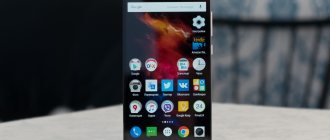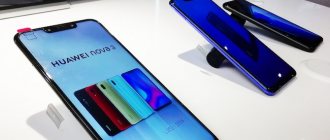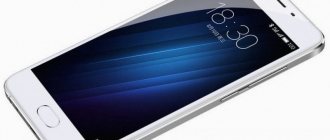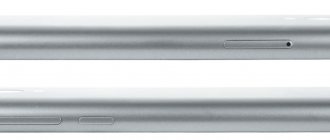Specifications
- Screen: 5'', IPS, 296 ppi, 1280 x 720;
- Operating system: Android 6.0 (Flyme 5.2.3);
- Processor: MediaTek MT6750, 4 x Cortex-A53 1.5 GHz, 4 x Cortex-A53 1 GHz;
- GPU: Mali T860;
- RAM: 2 GB (3 GB) LPDDR3;
- Built-in memory: 16 GB (32 GB) supports microSD memory cards up to 128 GB;
- Cameras: 13 MP (5 lenses, f/2.2, PDAF autofocus, dual LED flash), 5 MP (4 lenses, f/2.0, wide-angle);
- Battery: 2760 mAh, non-removable;
- Dimensions: 141.9 x 69.6 x 7.9 mm;
- Weight: 139 g;
- SIM slots: 2, nano-SIM, hybrid slot;
- Connectivity: FDD-LTE: 1800 / 2100 / 2600 MHz, WCDMA: 900 / 2100 MHz, GSM/GPRS/EDGE: 900 / 1800 / 1900 MHz, Bluetooth 4.0 (LE), Wi-Fi 802.11 a/b/g/n Dual-Band, GPS (A-GPS), GLONASS, Beidou;
- Sensors: fingerprint sensor (mTouch 2.1), light sensor, distance sensor, gyroscope, digital compass, magnetic field, accelerometer;
- Available colors: dark grey, gold, silver, metallic pink;
- Cost at the time of testing: RUB 12,990. — for the 16 GB/2 GB version, RUB 14,990. — for the 32 GB/3 GB version.
Review of Android smartphone Meizu U10: the experiment continues
Table of contents
- Introduction
- Specifications
- Packaging and equipment
- Appearance and design
- Display
- Hardware platform and performance
- Software and firmware
- Multimedia
- File system
- Wireless Interfaces and Communications
- Battery life
- Camera
- Comparison with competitors
- Conclusion
- Additional photos
Introduction
Most recently, we reviewed one of Meizu’s new products – Meizu U20.
But in fact, users were offered the already familiar and popular Meizu M3 Note in a glass case. Then the representative office explained to us that the release of the U line was a kind of experiment with a new design. However, it includes two devices, the older one has already been mentioned above, but we’ll get to know the younger one today. Meet Meizu U10!
There is continuity of characteristics - we have before us almost a copy of the famous “compact” Meizu M3S mini. We got acquainted with it even before the start of sales, and for those who read that review, the content of this text will seem familiar. The main interest is the case, and the main question is whether it is advisable to choose a glass case over a metal one.
announcements and advertising
2080 Super Gigabyte Gaming OC for 60 rubles.
Compeo.ru - the right comp store without any tricks
RTX 2060 becomes cheaper before the arrival of 3xxx
Ryzen 4000
series included in computers already in Citylink
The price of MSI RTX 2070 has collapsed after the announcement of RTX 3xxx
Core i9 10 series is half the price of the same 9 series
The price of memory has been halved in Regard - it’s more expensive everywhere
Specifications Meizu U10
| Model | Meizu U10 | Meizu M3S mini |
| CPU | MediaTek MT6750, 4 x 1.5 GHz + 4 x 1.0 GHz | MediaTek MT6750, 4 x 1.5 GHz; 4 x 1.0 GHz |
| Video processor | Mali-T860 | Mali-T860 |
| operating system | Android 6.0 | Android 5.1 |
| Memory, GB | 2 RAM; 16 ROM | 2 RAM; 16 ROM |
| Screen | 5.0″ IPS, 1280 x 720 | 5.0″ IPS, 1280 x 720 |
| Cameras, Mpix | 13.0 + 5.0 | 13.0 + 5.0 |
| Net | GSM; WCDMA; LTE | GSM; WCDMA; LTE |
| Number of SIM cards, pcs. | 2 | 2 |
| MicroSD support | Yes (instead of the second SIM) | Yes (instead of the second SIM) |
| Wireless interfaces | Wi-Fi; Bluetooth; | Wi-Fi; Bluetooth; |
| GPS/aGPS/GLONASS | Yes Yes Yes | Yes Yes Yes |
| Battery, mAh | 2 760 | 3 020 |
| Dimensions, mm | 141.9 x 69.6 x 7.9 | 141.9 x 69.9 x 8.3 |
| Weight, g | 139 | 138 |
| price, rub. | ~13 000 | ~12 000 |
As you can see, changes in the housing design resulted in minimal changes in characteristics. In fact, they turned out to be reduced to a slight decrease in the thickness of the case and a decrease in battery capacity. The latter can significantly affect the actual autonomy of the new product and be reflected when choosing between two models.
But the manufacturer has not changed its nature and offers several color options.
Packaging and equipment Meizu U10
Before us is an ordinary white cardboard box. The material is of high quality, the assembly does not cause the slightest complaints. The design can be called the standard of minimalism - apart from the name, there are no design elements.
The model name is shown on the front side.
The long ends bear the manufacturer's logo, the short ends are empty.
On the back there is a standard sticker indicating the main parameters of the device and identification numbers, as well as a sticker with contact information for the local service center.
Inside we immediately find the device itself, it is recessed inside the box and protected with films.
The entire internal space is divided into two boxes, the contents of each of them can be identified by the corresponding pictogram on the lid.
The delivery set is standard and does not contain any additional accessories.
It includes:
- USB-microUSB cable;
- Power adapter;
- A paperclip for removing the card tray;
- Technical documentation.
The packaging does an excellent job of protecting the smartphone from damage during transportation. This is ensured by both high-quality material and careful assembly of the box itself. The lid fits so tightly into place that it is not so easy to open.
Equipment
The days of colorful boxes covered with inscriptions are gone. Thick white cardboard, a digital model designation, company name and technical information on the bottom of the package are unlikely to tell an unprepared buyer much about what is inside. But if you read the Meizu U20 review, you will know all this.
The delivery set is unified: a smartphone in one of four colors, documentation, a “clip” for accessing SIM cards, a Micro-USB cable, and a charger (5V, 2A). For Meizu U20, the kit was in a plastic tray, but here everything is packaged in small boxes.
As in the case of Meizu U20, the review included a modification of the smartphone with 16 GB of internal memory and 2 GB of RAM.
Appearance
It would be impossible to distinguish the U10 from the Meizu U20 if not for the significant difference in size. 141.9 x 69.6 x 7.9 mm - these dimensions allow Meizu U10 to be classified as a compact smartphone. And this significantly changes the perception of the exterior.
If in the Meizu U20 review we talked about poor ergonomics and sharp edges, then in this case the metal edge no longer cuts into the palm so much, and holding the device is much more convenient. However, thanks to tempered 2.5D glass panels, whose manufacturer is not specified, the body is still slippery. The oleophobic coating on the glass is very good. No fingerprints are visible on a white background.
Otherwise, everything is exactly the same as the Meizu U20. Multifunctional mTouch 2.1 button, audio jack on the bottom edge of the case, dual-tone flash. Only the LED indicator here is located to the left of the front camera. The assembly of the case pleases with the precise fit of parts, so the impressions from it are positive.
Description of the advantages and disadvantages of the U10 phone
Meizu U10 measures 69.6 mm wide, 141.9 mm long and 7.9 mm thick. With such dimensions it is convenient to operate the device with one hand. In addition, the weight of the device is about 139 g. Even if you operate the device with one hand, its weight is almost not felt.
If we evaluate the overall ease of use of the phone taking into account the size and weight, then there will be no problems with everyday use.
The smartphone is equipped with an 8-core MediaTek MT6750 processor, which is manufactured at 28 nm. technical process.
The smartphone has 2 GB. RAM, which is quite enough. In very rare cases it will not be enough, but with this amount of RAM, you will rarely have problems.
The device's data storage capacity is 16 GB, and while this is enough for photos, it may not be enough for video shooting and a large number of games.
The phone is compatible with SD cards, so you can easily expand its memory. So you probably don't need to worry about storage capacity.
The U10 has a 5-inch display diagonal. The display is large enough that you will rarely have problems with its size. However, this display is not suitable for writing long texts.
The smartphone has a high-end display and any graphic content you display on it, including videos and games, will be displayed clearly.
The main camera of the phone has 12.98 megapixels and can take high-resolution photos and videos. While you're shooting landscapes or printing high-definition photos, you may want a higher-resolution camera, but most of the time you'll be happy with the camera.
Also, the smartphone has a 4.92 megapixel front camera, which is average for smartphone cameras. This is good enough for taking selfies, but you may not be satisfied with group photos or their print quality.
The battery capacity of Meizu U10 is 2760 mAh, which is a relatively large indicator. Compared to other smartphones, Meizu U10's battery life is good. With this capacity, you won't experience any problems even if you spend time on the Internet or Twitter for a long period of time. Even while playing games or watching videos, you can do so comfortably without worrying about battery life. However, some caution should be exercised when watching movies or playing games for too long.
Display
The Meizu U10 display has an HD resolution of 1280 x 720 with a diagonal of 5 inches, which in total gives 296 ppi - a satisfactory indicator. It is almost impossible to see individual pixels with the naked eye. The image is surrounded by a thin black frame, masked by the default wallpaper.
The screen, equipped with a polarizing layer, is slightly less bright than that of the model with a larger diagonal - 380 cd/m2. But the black color behaves much more stable when the device is tilted. Contrast is lost slightly at sharp angles. Color distortions are present, but within the normal range and are not noticeable during everyday use. The factory calibration of the matrix is not ideal, but again, it will not be easy to find a device with better color rendition in this price category. The touchscreen recognizes 10 simultaneous touches.
We would continue to praise the Meizu U10 display if not for the defect. Having completed battery life tests, during which the screen worked for a total of more than 42 hours, we discovered an afterimage imprinted on the matrix. Let's hope that this is an isolated case, since it is impossible to identify a problematic device with a quick inspection before purchasing.
Iron
Meizu U10 received a budget system on a chip from MediaTek. The MT6750 processor has eight cores of the same architecture, divided into two clusters with an operating frequency of 1 GHz and 1.5 GHz, as well as a Mali T860 graphics core. Our smartphone has 2 GB of RAM and 16 GB of internal memory. In addition, Meizu U10 reads microSD memory cards up to 128 GB.
As always, we assessed the operating speed in the performance mode, available in the Flyme settings. The results of synthetic tests are not record-breaking, but cause cautious optimism, since specialized graphics benchmarks demonstrate normal frame rates.
The operating system works quickly, and in game tests our assumptions were confirmed: the modest screen resolution allows the Mali T860 to produce decent graphics performance even in such demanding games as World of Tanks Blitz. In tank battles, stable frame rates are maintained even at high settings. The heating is moderate.
Specifications Meizu U10
Technical characteristics are almost completely identical to Meizu M3s.
Appearance, connectors, buttons and sensors
Meizu U10 has received a completely rethought design. Yes, earlier smartphones from this manufacturer also looked good, but now it’s on a completely different level. The front and back panels are completely covered with rounded 2.5D glass.
It is scratch-resistant and coated with an oleophobic layer, making it easy for fingers to glide over its surface.
The metal frames have a rectangular shape, and they have embossed beveled edges, emphasizing the nature of the material.
The following body colors are available: black, white, gold, and pink. Regardless of the color, the panel will be mirror and glossy. In black the device looks simply gorgeous. True, just as long as you don’t touch it. Even after a short period of use, the case is scary to look at because of the many fingerprints and greasy stains.
The oleophobic layer simply cannot cope with them. I’m glad that on a panel of a different color (white, for example), such disgrace is almost invisible.
The arrangement of the elements is quite familiar, except for the 3.5 mm jack. The tray for installing SIM cards and MicroSD storage is located on the left side, and the power and volume buttons are located on the right. The top edge is empty, but the bottom one accommodates a MicroUSB connector with OTG support, a standard audio jack, main speaker holes and a microphone.
There are no usual touch buttons for navigation either on the panel or on the screen. Instead, a universal mTouch 2.1 button is installed under the screen, touch and mechanical at the same time. Used to navigate the OS interface and has a built-in fingerprint scanner. Remembers up to 5 fingerprints, the recognition angle reaches 360 degrees. The sensor is not as fast as the flagships, but the speed and accuracy of operation are more than satisfactory. Product dimensions: 141.9 x 69.6 x 7.9 mm, weight – 139 g.
CPU
The smartphone is equipped with an 8-core entry-level MediaTek 6750 processor with ARM big.LITTLE architecture. The Cortex-A53 cores are divided into 2 clusters: 4 of them operate at a frequency of 1.5 GHz, and the remaining 4 are limited to a frequency of 1 GHz. The role of the graphics accelerator is performed by the Mali-T860 chip. Results of the synthetic Antutu test: from 31 to 40 thousand points. In this example, the indicators depend on the firmware version and the amount of RAM.
In practice, the smartphone confidently copes with trivial tasks. Of course, it is possible to load the device and make you think. But for a device of this price category this is quite normal. Any resource-intensive 3D games can be launched, although not always at the maximum graphics level. Under intense loads, there are no problems with excessive heating of the case.
Memory
The smartphone comes in two configurations: 2 or 3 GB of RAM, and 16 or 32 GB of ROM. In terms of RAM, the 3GB RAM version will offer slightly better gaming performance. And for multitasking there will be a little more free memory. That is, you can safely use the 2 GB version; its performance level is enough for not particularly demanding users.
With the built-in storage, things are as follows. If you need a lot of free space and plan to use two SIMs, you will have to take a configuration with 32 GB. If you want to save a little money and can do without an additional SIM card, the 16 GB option is obviously suitable. In this case, the space can easily be expanded up to 128 GB using an external MicroSD drive.
Autonomous operation
At the beginning of the review, it was mentioned that there are striking similarities between the hardware of the U10 and the M3s. So, the battery is an exception: from 3020 mAh, the capacity has decreased to 2760 mAh. The only logical explanation for such a downgrade can be considered an attempt by the manufacturer to influence the dimensions. As a result, the thickness of the U10 case is 7.9 mm versus 8.3 mm for the M3s.
With average usage, the battery lasts 1 day. In order to achieve work throughout the day with the same operating mode, you will have to learn to save. For example, do not run games, reduce the brightness, disable unused network modules, use the advanced power saving mode.
Camera
The smartphone uses a 13-megapixel photo module consisting of 5 lenses. It is complemented by a two-tone flash and fast phase-detection PDAF autofocus. The aperture value is F/2.2. The camera interface is simple and concise, but contains a lot of features. There are separate modes for shooting portraits, macro, panoramas, there is a built-in QR scanner and much more, which I describe in the video below. It is worth noting the presence of manual settings for independently selecting exposure values, ISO and other things.
Daytime photographs will delight you with fairly high detail, good color rendition, and good frame sharpness. Here are some pictures:
The smartphone can create “gifs” (GIF files), an example of which you can see below.
Selfie camera shot:
The maximum video recording resolution is FullHD. During the day, videos are recorded at 30 fps; in low-light conditions, the figure drops to 20 fps. Slow motion shooting supported. The front camera is a 5-megapixel module with F/2.0 aperture. The camera was programmed with a bunch of different filters. And all for the sake of obtaining the effect of smooth skin. Video recording with a resolution of 1080p is supported.
Display
The smartphone has an IPS screen with a diagonal of 5 inches. The image resolution is 1280 x 720 pixels, pixel density is 296 PPI. The image is smooth and beautiful, the colors are pleasant, and you can adjust the color temperature yourself. The maximum screen brightness is not prohibitive (397 cd/m²), but quite sufficient. GFF full lamination technology is used: the image is contrasting, and the touch layer clearly responds to all touches.
The display is covered with protective 2.5D glass with good oleophobic abilities.
Networking capabilities
The combination slot can accommodate two Nano-SIM cards. Moreover, both can work in 2G, 3G and 4G networks. The device is equipped with Bluetooth 4.0 BLE with low energy consumption, as well as a wireless Wi-Fi module capable of operating in the 2.4 or 5 GHz bands. Satellite navigation can be provided by GPS geopositioning systems with A-GPS support and GLONASS. Navigation works as expected, as do all other network communications.
Sound
The main speaker in inexpensive smartphones from Meizu is often criticized for its mediocre sound quality. And this despite the fact that there are not so many people left listening to music through speakers. The most common budget speaker is installed here. The volume is enough to hear an alarm, notification or call. And to listen to music you need to use good headphones. Then the sound quality will be appropriate.
Software part
Meizu U10, which are sold in the Chinese domestic market, comes with the YunOS operating system. At the time of this review, the first global multilingual firmware, Flyme 5.2.3.0G, based on Android 6.0, already exists. As a rule, sellers and stores install global firmware before the device gets into our hands. Moreover, self-flashing is not a problem for experienced users.
In addition to the standard Android functionality, the Flyme shell has its own interface and advanced settings. It is distinguished by the absence of a menu button (all icons are located on desktops). In most cases, Meizu software works quite stable. In addition, Flyme is constantly being improved and updated as new software versions become available.
Software
For the international market, Meizu U10 comes pre-installed with Flyme 5.2.3, based on Android 6.0. The system is designed in a single style and provides rich opportunities for personalization. The built-in theme manager allows you to significantly change the design. Not only choose wallpapers and icons, but also recolor some applications, the notification shade, and context menus to your liking. It’s a pity, not all design themes available in the catalog look as organic as the standard one.
Recently, Meizu has been providing a choice whether to install Google services or not. Otherwise, the OS content is familiar to people familiar with Flyme. It will not be possible to list absolutely everything within this material, so we will focus only on some interesting points.
The Security Center application contains a permission manager, built-in antivirus, and firewall. In the section designated simply as “security,” you can block individual applications using a fingerprint sensor that stores up to 5 fingerprints. This function works correctly.
Overall, Flyme 5.2.3 is an excellent rethinking of Android, replete with small, but useful and practical additions, with almost no unnecessary features.
Adviсe
It is better to avoid installing custom and third-party firmware. If, in case of incorrect installation of official images, it is possible to return the previous version, alternative versions will not provide such an opportunity.
If the phone was not purchased from an official distributor, you should first check whether it has been certified in Russia.
This will let you know if it can be flashed. Just go to https://mymeizu.ru/service/verify and enter the phone’s IMEI. This is the official representative of Meizu, which has a database of officially registered models.
If the phone is not listed in the representative database, it is worth checking its software version - it may be Chinese or intended for other countries. Then you will need to change it to an international one, otherwise the update will not work.
Before flashing Meizu U10 through a computer, it would be a good idea to check it with a computer antivirus. This often makes it possible to detect malware, especially if applications from third-party sources have been frequently installed on the phone.
Connection
If you abandon the SD card, then the hybrid slot of the Meizu U10 will accommodate two nano-SIM cards, working in turn, according to the common Dual SIM Dual Standby scheme. The smartphone's radio module supports LTE frequency bands: 1800 / 2100 / 2600 MHz. The connection is good, and the dialer application is functional, including filtering incoming calls and even recording them in the internal memory of the smartphone.
The energy-saving version of Bluetooth 4.0 is supported for connecting to wireless headsets. Another plus of the U10 is its Wi-Fi module, operating in the 2.4 GHz and 5 GHz bands. Using USB OTG, flash drives are connected to the smartphone. There is no FM radio.
As for determining location using GPS (A-GPS), GLONASS and Beidou satellites, the number of satellites detected by a smartphone within a minute reaches ten, and the accuracy is about 5 meters.
Camera
Meizu U10 received 13 and 5 MP sensors with f/2.2 and 2.0 apertures, respectively - exactly the same cameras as those installed in the U20. They don't give surprises.
In the vast majority of cases, macro photographs, as well as shots taken at a medium distance in bright daylight, are not a shame to show to friends without first applying post-processing effects from the viewfinder application. Panoramas, when you look at them more closely, turn out to be a little worse - they lack detail.
At dusk, again, as in the last review, the autofocus algorithm fails. The best night photos are taken at close range, where you can illuminate objects with a dual LED flash with color correction. For the front camera, it only makes sense to criticize the algorithm, which occasionally makes mistakes with the white balance.
Thus, in terms of the overall capabilities of the Meizu U10 cameras, they are typical for this price segment.
Let's sum it up
By purchasing this smartphone, the buyer will receive a balanced device in a body with a fashionable premium design at a relatively low price. And what? Meizu U10 performs even better in performance tests than Meizu U20, and the screen, despite its lower resolution, provides an overall more pleasing picture to the eye. Yes, we saw an afterimage frozen on the matrix, but this is most likely an isolated case. Only photography lovers have a high chance of being disappointed in a smartphone - here the Meizu U10 does not offer anything outstanding.
Pros:
- Appearance and effective oleophobic coating;
- Decent graphics performance;
- Display.
Minuses:
- Cameras that don't stand out, autofocus prone to errors.
May not like:
- Slippery body.
Final score: 7 out of 10.
Hard Reset for Meizu U10 16Gb
Instructions on how to do a Hard Reset on Meizu U10 16Gb (factory reset). We recommend that you familiarize yourself with a visual guide called resetting settings on Android. .
Reset codes (open the dialer and enter them).
- *2767*3855#
- *#*#7780#*#*
- *#*#7378423#*#*
Hard Reset via Recovery
- Turn off your device -> go to Recovery
- "wipe data/factory reset"
- “yes - delete all user data” -> “Reboot System”
How to log into Recovery?
- hold down Vol(-) [volume down], or Vol(+) [volume up] and the Power button
- A menu with the Android logo will appear. That's it, you are in Recovery!
Resetting settings on Meizu U10 16Gb can be done in a very simple way:
- Settings->Backup and reset
- Reset settings (at the very bottom)











